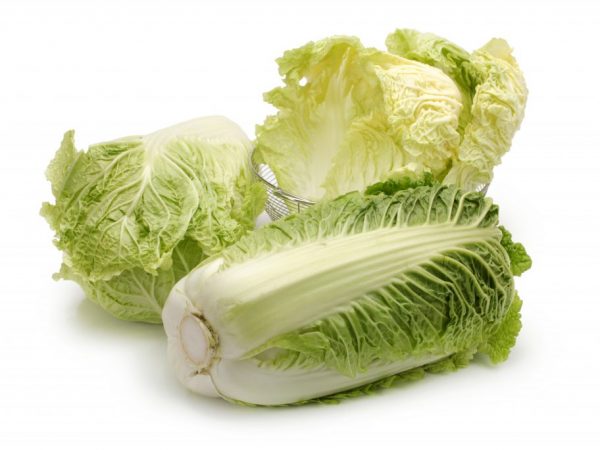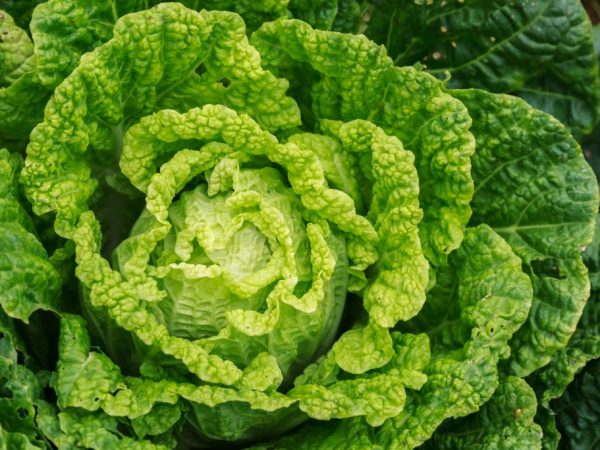Cultivation of Chinese cabbage in Siberia
Peking cabbage (aka petsai or salad) came to our latitudes from China. A tasty and healthy vegetable turned out to be unpretentious in care, so the cultivation of Peking cabbage in Siberia is becoming more and more popular.

Cultivation of Chinese cabbage in Siberia
Features of growing cabbage in Siberia
Seedlings of Chinese cabbage are cold-hardy, especially at the stage of head formation, when excess heat only harms the culture.
Resistance to lower temperatures makes petsai an excellent option for growing in the harsh continental climate of Siberia.
Peking cabbage can be grown outdoors or in greenhouses, which is generally preferred in unstable cold weather. Important parameters of growing in Siberia are:
- Compliance with the optimal time for sowing seeds for the region (April-May).
- The relationship between humidity and temperature levels. If the air is too hot, and the humidity of the air and soil is insufficient, the process of correct development of the culture and the formation of the head of cabbage will be disrupted. An amplitude of 30-20 ° C will be favorable for the cultivation of Peking cabbage.
- Maintaining the optimal length of daylight hours - no more than 12 hours.
If the light and heat indicators are exceeded, the plant will put all its strength into flowering without developing the fruit.
Variety selection
The Petsay variety is chosen based on the following parameters:
- ripening period;
- the purpose of using the crop we grow.
Early maturing varieties are distinguished by the juiciness of their heads, but they are poorly stored and transported. Late ripening hybrids have good keeping quality. They do not lose their taste and marketability during long-term transportation and are ideal for conservation. The best varieties for continental climates have an early (planted in a greenhouse), mid-early and medium ripening period.
In Siberia, the best option is Dutch hybrids that are resistant to shooting (Bilko, Manoko). They are less sensitive to temperature extremes and tolerate cold well. In addition to them, you can plant such frost-resistant varieties as Peking Express, Glass, Champion, Northern Beauty F1, Khibinskaya, Swallow, Richie F1, etc.
Growing methods
Chinese cabbage seeds can be planted either directly in open ground or wait for seedlings to sprout.
Planting ready-made seedlings allows you to shorten the ripening time of the variety, so many people prefer this option.
Each of the growing methods has its own characteristics:
- Seedling method. Seeds are sown in early April (early varieties) or at the end of May (late). Petsay has a hard time transferring, so initially it is planted in separate containers. A couple of days after sowing (when shoots appear), the seedlings are transferred to a room with good lighting. Watering is carried out so that the soil remains constantly moistened. Cabbage is planted in open ground after 5-6 true leaves are formed on it.
- A reckless way.Depending on weather conditions, seeds are sown in open ground in late April or early May. Seed holes are formed at a distance of about 30-35 cm from each other, sprinkled with earth and ash on top. Immediately after planting, the cabbage is watered abundantly. The first shoots germinate 5-7 days after sowing.
When choosing any of these planting methods, a distance of at least 50 cm is left between the rows so that the seedlings have enough space for the development of the root system and the formation of heads. To protect the seedlings from a possible drop in temperatures and accelerate germination, the beds are covered with a film or agrofibre.
Petsai is a rapidly maturing crop. The active period of growth in early ripening varieties is 40-50 days, medium - 55-60, late varieties - 60-80. When sowing seeds with an interval of 2 weeks after harvesting the previous harvest, a new one is removed several times per season.
Care

Caring for cabbage is easy
Caring for Chinese cabbage in Siberia is simple and based on the following standard requirements:
- Regular moderate irrigation of the planting material. The culture does not tolerate waterlogging, therefore, sprinkling is optimal once every 5-7 days.
- Loosening the soil to saturate it with oxygen. It is carried out shallowly so as not to damage the weak root system characteristic of petsai.
- Manual weeding from weeds - potential places of accumulation of pests (cruciferous fleas, aphids, white butterflies).
- Fertilization. For petsay, organic feeding will be most suitable. It is important to observe the measure so that the head of cabbage, which is grown for human consumption, does not accumulate nitrates.
- Regulation of daylight hours and temperature.
- Prevention and control of diseases and pests.
Peking cabbage diseases
For Chinese cabbage, which is grown in Siberia, the following diseases are the most dangerous:
- Black leg (Rhizoctoniasis) is a fungal disease in which the stalk narrows and blackens. Contributing factors are an excess of moisture in the soil, a lack of light, excessive thickening of crops, and improper care.
- Keela is a bacterial disease that causes deformation of the root system. The risk of developing keela increases with acidic soil, high humidity and poor seed quality.
- Gray mold - brownish-gray spots on the leaves caused by contamination by spores of the fungus.
- Downy mildew (peronosporosis) is a fungal disease that is visually expressed on the leaves in the form of white spots with a powdery coating. The spread of the fungus is facilitated by an excess of moisture, excessive thickening during planting, and low temperature.
- Black spot (Alternaria) is a fungal infection that appears as dark spots on old leaves.
- Slimy bacteriosis (wet bacterial rot) is a bacterial disease that affects growing and already harvested vegetables.
Most of these diseases can be avoided through regular prophylaxis, selection of quality seed and disinfection.
Culture pests
To grow a rich harvest of Peking cabbage, the following pests are prevented from appearing and spreading:
- cruciferous flea beetles,
- cabbage scoop,
- cabbage moth,
- white turnip butterfly (turnip),
- cabbage aphid,
- cabbage fly,
- rapeseed saw,
- cabbage caterpillars.
Preventive measures aimed at controlling peking cabbage pests consist of regular inspection of each seedling, treatment with insecticides and the installation of a special protective net against cabbage fly.
Conclusion
Anyone can grow Peking cabbage in the Siberian climate. The cold-resistant crop is characterized by a fast ripening period, delicate leaves and a pleasant taste.
Subject to the indicators of light and heat, petsai is able to please with a crop rich in vitamins and minerals. Heads of cabbage are obtained from one plant 2-3 times a season.


